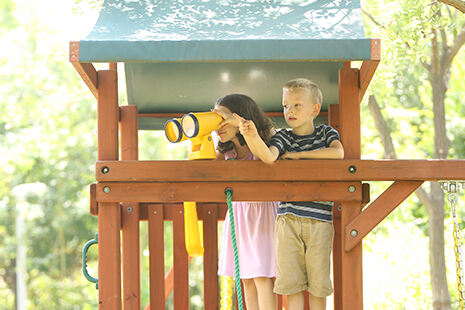Since the pandemic hit, we've seen a real surge in people getting outside for their workouts. When gyms shut down and everyone had to keep distance from others, folks started heading to local parks, nature trails, and anywhere else they could find space to move around. The Sports & Fitness Industry Association reported something interesting too: hiking, running, and biking all saw big jumps in participation rates during those lockdown months, and many people still prefer these activities now. What began as necessity turned into habit for lots of us. There's something about fresh air and open space that just feels better than working out indoors. Most fitness professionals agree that these outdoor sessions do more than just burn calories. They help clear minds and lift spirits in ways that indoor exercises often don't match up to. And honestly? Many people probably won't go back to their old gym routines even after everything returns to normal.
People who regularly get outside while working out often talk about how much better they feel mentally after these sessions. The Mindbody Wellness Index reports that nearly 4 out of 10 people think being outdoors really boosts their mental health. Fitness trainers see this too when clients keep coming back for trail runs instead of treadmill workouts. What started as something people did during lockdowns has become a real lifestyle choice for many. Outdoor exercise just keeps sticking around as a core component of how most folks approach their overall wellness these days.
People are getting outside for their workouts because it does wonders for mental health. When folks exercise in natural settings, they tend to feel less anxious and generally happier, which many scientific papers have confirmed. The Mindbody Wellness Index actually highlights how something as basic as going for a walk outside can really cut down on stress. Looking at the numbers, people who stick with outdoor fitness routines report feeling much better about themselves overall. Even short bursts of time spent in green spaces make a difference. Just twenty minutes each day in the park or woods helps lower stress hormones, making it one of those simple fixes that works surprisingly well without needing fancy equipment or expensive memberships.
Many community initiatives now include outdoor fitness as part of their mental health offerings. We're seeing more therapists and local groups incorporate nature-based activities into treatment plans and social programs. The numbers back this up too adults returning to outdoor sports after years away seem to experience real improvements in their mental state. According to ClassPass data from their Look Back Report, bookings for things like hiking, kayaking, and trail running jumped by almost 92%. Getting active outdoors gives people two benefits at once better physical condition and improved mood. That's why so many mental health professionals recommend getting outside when dealing with stress or anxiety issues.
By prioritizing time in nature, individuals not only improve their physical fitness but also address their mental health needs, underscoring why outdoor fitness solutions continue to resonate with people worldwide.

Over the past few years, creating tough outdoor workout gear for parks has really taken off as communities look for ways to boost general health. Big name companies are putting serious effort into building stuff that lasts forever and can take whatever punishment comes from daily park users. Take a look at parks around the country where they've installed these outdoor gyms - people report feeling better overall and there's definitely been a noticeable jump in how often folks actually use them. Just check out what happened at Mount Saint Mary's University down in LA. They added all sorts of exercise stations outside and suddenly students started hanging out there instead of just passing through. When manufacturers pick materials that stand up to rain, snow, and sun while making sure things fit comfortably for all body types, that makes a world of difference. People from teenagers to grandparents find something they can do without worrying if the equipment will hold up or look good after months of exposure to Mother Nature.
More and more folks are getting into outdoor fitness right at home these days, especially adults who want to work out without anyone watching. People are starting to hit their backyards or even small balconies instead of going to crowded gyms. The market is seeing a real boom in portable workout gear that doesn't take up much space when stored away. Take BeaverFit's Performance Locker and HitchFit as good examples these days. They fit pretty much anywhere from tiny patios to larger yard setups, letting folks switch up their workouts depending on what space they have available. Sales numbers tell the same story we see on the ground too. Since the pandemic started, home outdoor fitness stuff has been flying off shelves. Makes sense really, since nobody wants to deal with gym crowds anymore. Some just prefer working out in familiar surroundings where they feel comfortable and free from judgment.
New breakthroughs in material tech are making outdoor workout gear much tougher against all sorts of weather conditions. When manufacturers start using these weatherproof materials, people actually get safer workouts and the machines last longer too. The fitness world is slowly moving toward greener options as companies begin to mix in recycled or sustainably sourced components into their outdoor equipment designs. Take BeaverFit for instance they've been pouring resources into better manufacturing techniques so their stuff can handle rain, snow, and sun without breaking down over time. Their focus on building durable equipment makes sense environmentally speaking and meets what customers want nowadays something that stands up to Mother Nature while still delivering good workouts year round.
What stands out about the Navy's new outdoor fitness pavilion isn't just its appearance but how it handles Mother Nature's worst. Built to withstand hurricanes, this structure keeps working when most others would fail during serious storms. The designers really went all out with reinforced frames and special coatings that resist corrosion from saltwater spray. Military fitness experts we talked to stress how important this kind of durability actually is for keeping troops ready at a moment's notice, especially since training locations often face unexpected weather changes. When sailors need their workouts, they can count on finding equipment that works no matter if it's freezing cold or scorching hot outside.
Putting up modular HIIT stations at Navy outdoor fitness pavilions gives people lots of different ways to work out that suit all kinds of fitness levels and helps build a sense of community among users. The stations come equipped with things like pull-up bars, climbing ropes, bench press setups, and squat racks so folks can mix and match their workouts according to what they need. We've seen these stations really take off at several Navy bases already, where sailors and staff get moving together during lunch breaks or after duty hours. Fitness pros who've worked with these setups recommend starting slow when first approaching them, especially if someone isn't used to intense training. They also stress how important it is to keep changing up the routine to stay motivated and avoid getting bored with the same old exercises day after day.
The Navy has really stepped up its game when it comes to going green, especially with those solar panels installed at the outdoor fitness pavilion. Putting renewable energy into action there does more than just look good environmentally speaking—it actually cuts down on running costs too. The whole setup makes sure they're getting maximum bang for their buck from electricity while still keeping people healthy and active. Fitness enthusiasts can work out under the sun without worrying about power bills spiking during peak hours. What's interesting is how this blend of exercise facilities and clean energy creates something special that other organizations might want to copy. It shows what happens when military branches start thinking seriously about both planet protection and physical well being at the same time.

VR is changing how people approach outdoor workouts by letting them feel like they're actually outside even when they aren't. The tech creates these immersive settings that make working out feel less like a chore and more like an adventure through forests or mountains. Companies have started developing specific VR programs for fitness enthusiasts. A recent report from Maryland State showed that folks who work out using VR tend to stay engaged about 25% longer than those without it. That suggests we might be seeing more tech integration in our fitness routines as time goes on. While some still question if this is just a passing fad, many gym owners see value in combining real exercise with virtual landscapes, giving customers something different from traditional treadmills and weights.
Smart fitness technology is changing how people track their outdoor workouts, giving them instant feedback and all sorts of useful information about their performance. Companies such as Fitbit and Garmin have really stepped up their game in recent years. Their devices now come packed with GPS functions, heart rate sensors, and even suggest workouts based on individual preferences. The actual data collected helps folks get better results from their exercise routines because they can see exactly what's working and adjust accordingly. Many trainers actually point out that when people start seeing numbers and trends in their activity levels, it tends to keep them motivated longer than just going through the motions. That's why so many serious athletes and casual exercisers alike are turning to these high tech gadgets for their daily runs and hikes.
Wearable tech has really changed how people track their outdoor workouts lately. Smartwatches and those fitness bands now give detailed info about what's happening during exercise sessions. They count steps taken, track calories burned, monitor heart rates, all while making the whole outdoor workout experience much better for most folks. According to some market research done by Grand View Research, we're looking at around $91.98 billion in global sales for fitness trackers by 2027. That kind of growth shows just how popular these gadgets have become among fitness enthusiasts. What comes next? Well, experts think manufacturers will keep working on better sensors and integrating artificial intelligence into their products. This should lead to even more accurate tracking when people are outside exercising, helping them squeeze every bit of benefit possible from their time spent working out.
 Hot News
Hot News2025-12-03
2025-11-03
2025-11-11
2025-11-19
2025-11-24
2025-11-27